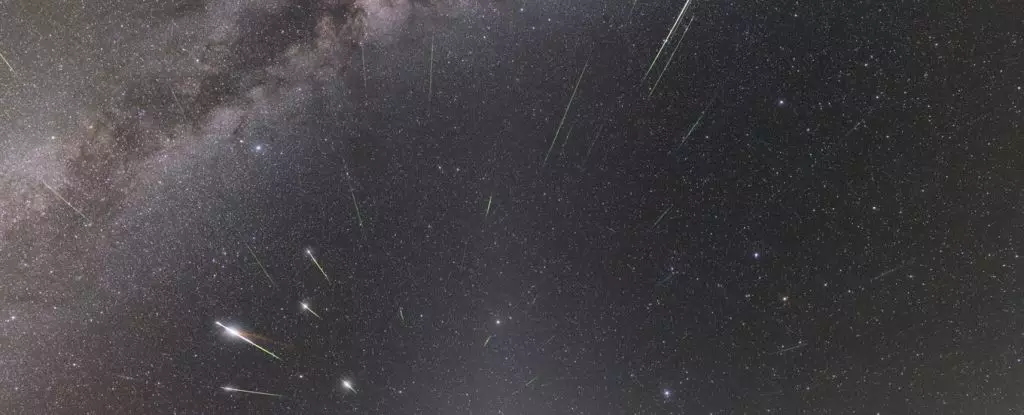As night falls, the sky transforms into a mesmerizing tapestry, and May presents one of the most enchanting phenomena in the cosmos: the Eta Aquariid meteor shower. This annual event draws skywatchers into the great outdoors, inviting them to experience nature’s breathtaking display. On the nights of May 5 and 6, the heavens above the southern tropics will seem to sparkle as Earth’s atmosphere ignites particles of cosmic dust, offering a scintillating journey through the universe. With the right conditions, viewers can witness dozens of shooting stars in a matter of minutes, fueling a sense of wonder that captivates both young and old.
The Anatomy of Meteor Showers
Meteor showers are more than just ethereal lights against a dark canvas; they are remarkable celestial events that occur when Earth traverses through trails of debris left by comets or asteroids. This particular shower originates from the remnants of Halley’s Comet (1P/Halley), a celestial wanderer that graces our skies roughly every 76 years. As these tiny particles enter our atmosphere at staggering speeds, the friction generates heat, resulting in brilliant streaks of light— the meteors we observe from the ground. This repetitive annual phenomenon occurs due to the orbital paths of both Earth and the debris trails shared through time and space.
Viewing Conditions and Best Practices
To maximize your chances of enjoying the full spectacle of the Eta Aquariids, careful planning is necessary. Ideally, seekers of shooting stars should find a dark refuge away from the glare of city lights, where the heavens can be appreciated in their most natural state. Comfortable seating—a reclining chair or a cozy blanket—will keep you comfortable, allowing you to lay back and gaze upward. The best viewing window typically opens just before dawn, which aligns with the spatial geometry of the shower, allowing observers to witness a flurry of meteors streak across the sky.
It’s essential to note that, while meteor counts can reach impressive rates—up to 60 meteors per hour in the Southern Hemisphere—viewers in the Northern Hemisphere can still revel in the celestial show, although their meteor count may be capped at approximately 30. Furthermore, with the Moon in a waxing gibbous phase, conditions remain favorable since the Moon will set before the prime viewing hours.
Why the Eta Aquariids Matter
Meteor showers like the Eta Aquariids are invaluable not just for their beauty, but for what they symbolize in the broader context of astronomy and our relationship with the cosmos. They remind us that we are part of a larger universe filled with history, exploration, and endless mystery. Each meteor is a fragment of a bygone era, a relic from the early solar system, connecting us to the celestial bodies that chart our existence.
Observing such events can also rekindle human curiosity and inspire a collective stewardship of our planet and our understanding of the universe. The experience of standing beneath a canopy of stars, catching fleeting glimpses of cosmic debris, can prompt deeper reflections about our place in the cosmos—a reminder that wonder and exploration are integral to the human experience.
The Journey After the Peak
While the peak viewing dates are thrilling, it’s important to remember that the Eta Aquariid shower doesn’t simply end after May 6. The shower continues into late May, gradually diminishing in intensity. So, even if you miss the prime nights, there are still chances to observe these heavenly wonders. For the avid astronomer or sky enthusiast, keeping tabs on upcoming meteor showers throughout the year can maintain a keen sense of anticipation. Utilizing resources like the International Meteor Organization’s meteor calendars can be incredibly helpful for tracking future shower events.
As May unfolds, grab a blanket, invite a friend, and look skyward to appreciate the ephemeral beauty of the Eta Aquariids. The night is alive with the whispers of the universe, inviting us to lay back and dream beneath its vastness. With a commitment to exploration and a sense of wonder, who knows what cosmic secrets might reveal themselves in the night sky?


Leave a Reply